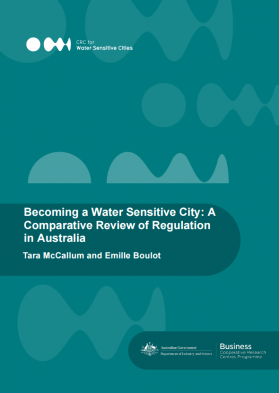Becoming a water sensitive city: a comparative review of regulation in Australia
Abstract
Existing urban water management practices have been generally successful in delivering services to Australian communities. However, pressures arising from climate change, urban population growth and increasing urban densification are driving calls to reform the urban water sector to help make our cities more sustainable, resilient, productive and liveable. Such reform would require adopting innovative technology and new management practices. Yet, current regulatory frameworks have been identified as key impediments to making these changes.
Our earlier work involved conducting stocktakes of the existing primary legislation related to urban water across three Australian jurisdictions. We also employed the technique of regulatory space mapping to better conceptualise and understand urban water regulation in Melbourne, Victoria. Building on this previous work, the report is a comparative review of the urban water regulatory space in the three Australian metropolitan areas of Melbourne, Perth and Brisbane. The appendices to the report contain the detail of this mapping exercise. The report focuses on the uptake of innovative service delivery options, which we term ‘water sensitive service delivery’. These options are likely to involve the exploitation of new water sources and promise to provide multi-functional benefits. The report has dual aims. Firstly, to identify the extent to which regulation in Australia may be acting as an enabler to these options, so that this role may be more widely encouraged and adopted. Secondly, to identify where regulation may be acting as an impediment to innovation, to enable innovation to flourish through the removal of such impediments
